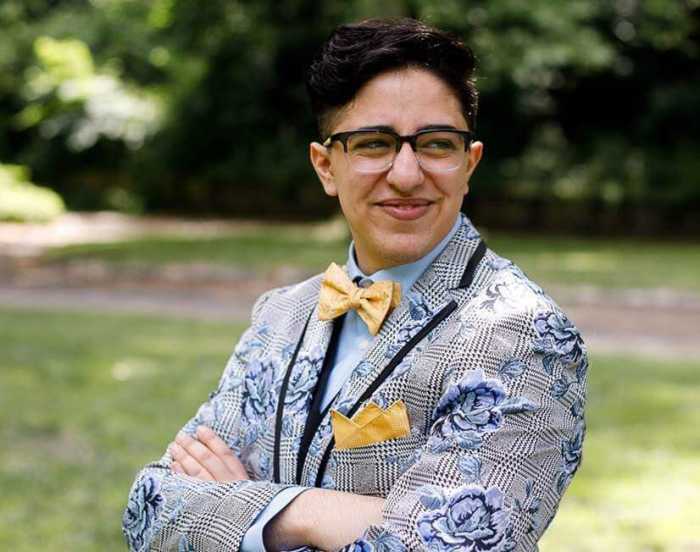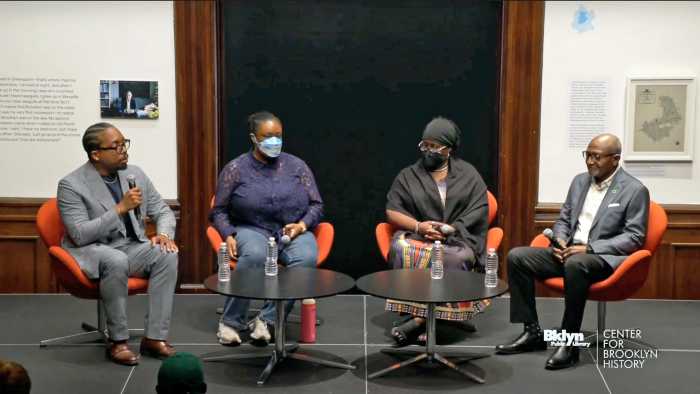A New York City Housing Court judge ruled on September 23 that it was possible for two different men to be members of a deceased gay tenant’s family at the same time. Rejecting a landlord’s motion to evict the man who had been living in the apartment with the decedent, Judge Karen May Bacdayan decided that Markyus O’Neill should have the opportunity to prove that he was a family member of Scott Anderson, despite the landlord’s evidence that Robert Romano swore that he was Anderson’s life partner, even though they lived in separate apartments.
The case turns on the meaning of the New York Court of Appeals’ 1989 decision, Braschi v. Stahl Associates Company, the first appellate decision in the United States to recognize that a same-sex couple living together could be considered a family, as it was later formalized in new regulations by the Division of Housing and Community Renewal and the legislature.
As the AIDS epidemic swept through the gay community in New York during the 1980s, many men faced eviction from their homes when their partners died from AIDS, because the lease was in the deceased partner’s name. Rent regulations provided that when a tenant dies, members of his family living with him in the apartment are entitled to become successor tenants. Landlords argued that same-sex couples were not family members because same-sex marriages did not exist. In the tight rental housing market of the time, landlords were eager for vacancies which could lead to large rent increases or even total decontrol of an apartment’s rent.
When one such case came to the New York Court of Appeals, it decided that the absence of a definition of the term “family” in the rent regulations left it open to the court to adopt a “functional definition.” If Miguel Braschi, the survivor of such a relationship, could prove to the court that his relationship with his deceased partner was “familial,” he should have the same right as a legal spouse to stay in the apartment. The subsequently adopted regulations set out a list of factors that courts could consider in deciding whether a relationship was familial, specifically ruling out any inquiry into the sexual relationship, if any, between the residents of an apartment.
Scott Anderson, the “tenant of record” in the apartment in this case, died on October 27, 2021, and the rent stabilized lease expired two months later. O’Neill refused to move out of the apartment, where he had lived with Anderson since 2012. O’Neill was aware that Anderson had a relationship with Romano dating back at least 15 years, and that Romano didn’t “like” O’Neill, but he insisted that he and Anderson had a familial relationship and he was entitled to be a successor tenant.
Judge Bacdayan’s decision discusses in detail O’Neill’s factual allegations in his response to the landlord’s eviction motion, as well as the details in Romano’s affidavit, offered by the landlord in support of its motion for summary judgment. Romano swore that his relationship with Anderson now dated back about 25 years, that he “loved Scott Anderson” and that they were “life partners.” “During the 25 years that [we] shared together,” he wrote, “we held ourselves out as a couple, an exclusive couple,” and that they traveled together and “considered each other family and incorporated one another into each other’s immediate family.”
The landlord, West 49th Street LLC, argued that O’Neill was just a “roommate” with whom Anderson was friendly, but not his life partner. O’Neill admitted that he was never introduced to Anderson’s family of birth, and that he had no formal documentation, such as joint bank accounts or joint ownership of anything. On the other hand, he said that the two men were very close, did many things together, and fulfilled several of the factors listed in the regulations, and that he did contribute to the costs of the apartment.
The landlord pointed out that the Braschi ruling and the regulations applied to couples who lived together in an apartment as family members, not to mere roommates. Judge Bacdayan faced the issue that neither the Braschi opinion nor the subsequent regulations explicitly embraced the idea of such a family consisting of more than two adults.
The judge’s opinion reads like somebody musing about how to interpret the law in a way that acknowledges the realities of family life. “Why then,” she wrote, “except for the very real possibility of implicit majoritarian animus, is the limitation of two persons inserted into the definition of a family-like relationship for the purposes of receiving the same protections from eviction accorded to legally formalized or blood relationship? Why does a person have to be committed to one other person in only certain prescribed ways in order to enjoy stability in housing after the departure of a loved one? Why does the relationship have to be characterized by ‘exclusivity’? Why is holding each other out to the community as a family a factor? Perhaps, as in the instant case, the triad has chosen to closet their relationship from others? Perhaps the would-be successor is not ‘out’. Maybe they do not believe their ‘real’ family is open to alternative kinds of relationships. ‘Holding out’ discounts the existence of prejudice and misunderstanding about communities and people that are not ‘normie.’ Do all nontraditional relationships have to comprise or include only two primary persons.”
She characterized as “paradoxical” that “the Braschi court’s formulation of what comprises a nontraditional relationship is rooted in traditional ideology.” But, she wrote, “what was ‘normal’ or ‘nontraditional’ in 1989 is not a barometer for what is normal or nontraditional now.” She quoted a lengthy excerpt from a New Yorker article published in 2021 about nontraditional family norms, and asked, “Should a person who would not meet the requirements for succession to a rent stabilized apartment after Braschi was decided in 1989, now, 33 years later, be evicted when they may qualify, as was concluded in Braschi, under a more inclusive interpretation of a family?”
The judge goes on in this vein for several hundred words. She observed that “read together, their affidavits imply that Mr. Anderson loved both of them in different ways.” She decided it would be improper to award either party summary judgment, but rather to put the issue to the test of judicial factfinding through discovery and a hearing. The rent regulations limit protection to surviving partners who were living in the apartment when the tenant died, so Romano cannot claim the right of successorship to the lease, even if he can prove that he was Anderson’s unmarried “life partner.” If the court ultimately concludes that Romano was Anderson’s only life partner, O’Neill will lose the case. But if O’Neill proves that both he and Romano were life partners of Anderson, he may win the case and avoid eviction after having lived in the apartment together with Anderson for a decade. But the case can’t be decided as a matter of law on the proposition that a person can have only one family-like partner at a time.
O’Neill is represented by Thomas John Hillgardner, a New York attorney whose office is in Jamaica, Queens.
Prior to becoming a New York City Housing Court judge in 2018, Judge Bacdayan was a Legal Aid attorney who focused on representing tenants in the Housing Court, so she is likely no stranger to the idea of diversity of non-traditional family formations.



































